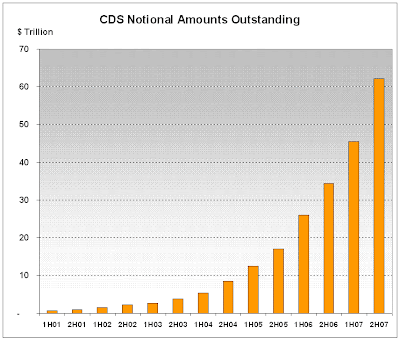As we move towards anointing another Defender of The (Oil) Faith (aka US President), how do the wannabes stack up in confronting the mounting energy crisis? Here are some facts on their "energy policies".
- Clinton and McCain both favor suspending the 18.4 cent per gallon federal gasoline tax for the summer driving season. This populist measure is analogous to pushing for lower cigarette taxes as tobacco prices rise. Let's all root for more cancer and emphysema, shall we?
- Obama and Clinton promise $150 billion over 10 years to develop alternative energy. Do a simple comparison: at today's prices the US spends $1 trillion per year on crude oil alone. Anyone that believes that $15 billion is going to make a real difference is naive, uninformed or in denial - or just throws out round numbers to palliate voters. Or all of the above.
- Clinton and Obama both want higher fuel economy standards from the current 25 mpg. Admirable, but Clinton wants 55 mpg by 2030 and Obama 50 mpg by 2026. Since our politicians love stargazing while whispering sweet nothings to our ear, how about 100 mpg by 2100? Perpetual motion by 2200? How about the simple fact that, should they get elected, they will be out of office by 2016 at the very latest? The problem is now and we must confront it right away. Forget McCain, he comes from another planet altogether: in 2003 he voted down a measure to increase fuel economy to 40 MPG by 2013.
- Clinton and Obama want to "investigate manipulation of oil prices". That's what I call the Darth Vader initiative: send noble knights to fight the Dark Side and liberate the Republic from the claws of the Evil Manipulator. Plays well with those who view issues in black and white and cartoons in Technicolor (IQ<100 a must).
No wonder the passengers are getting nervous...
OK then, what should be done? Well, first of all we need to land the plane without killing everyone on board. After decades of mostly forced growth (think of how foie-gras is made) we actually need a prolonged period of shallow recession to retool the national (and global) economy away from the Permagrowth model. If the rest of the world doesn't want to follow, too bad. That's what we have the Customs Service for.
Some concrete proposals:
- Start a crash campaign to honestly inform people about energy facts and choices. Updating Jimmy Carter's "moral equivalent of war" speech is not a bad place to start.
- Regulate money supply via the Greenback Model.
- Legislate a stream of steady increases in taxes for carbon-based fuels (e.g. 10 cents/gallon every six months, 5 cents/kwh of "black" energy), to raise at least $100+ billion per year and recycle the money into alternative energy sources and systems.
- Impose sales and annual use/registration taxes for automobiles on a sliding fuel economy scale. Those getting over 50 mpg will pay very little or nothing, whereas gas guzzlers will pay 5% of their original factory MSRP every year. Recycle the money into public transport, including high speed trains.
- Withdraw from Iraq and Afghanistan within one year and reduce the overall size of the military involved in securing fossil fuel sources and routes, at a pace commensurate to the switch to alternative energy. This will save a minimum of $150 billion/yr at once and eventually at least $300 billion/yr. (the total military expense is now $630 billion/yr).
- Revamp the current pensions and medical benefits scheme, since it is entirely based on the Permagrowth and serial bubble paradigms. This is key because people will not accept both present and future sacrifice. If changing energy is difficult, this is an order of magnitude harder.
















